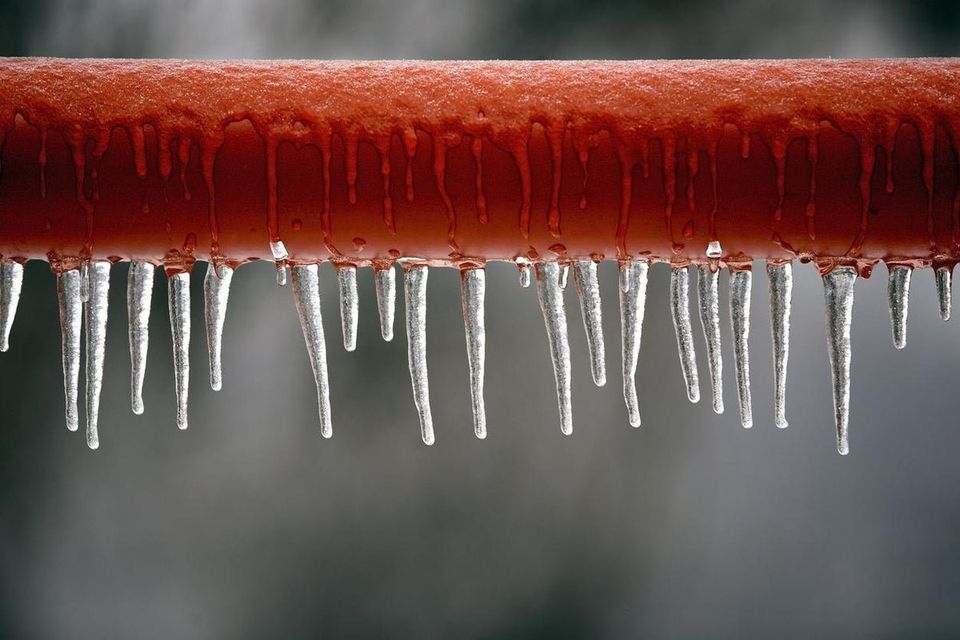We have discovered this article pertaining to Helpful Tips to Prevent Frozen Pipes this Winter down the page on the web and concluded it made sense to write about it with you over here.

Winter can wreak havoc on your pipes, especially by freezing pipelines. Here's just how to stop it from taking place and what to do if it does.
Intro
As temperatures decrease, the danger of frozen pipelines rises, possibly causing costly repairs and water damages. Comprehending exactly how to avoid frozen pipes is crucial for home owners in cold environments.
Recognizing Icy Pipes
What causes pipelines to freeze?
Pipelines freeze when subjected to temperatures below 32 ° F (0 ° C) for prolonged durations. As water inside the pipelines freezes, it broadens, putting pressure on the pipe walls and possibly creating them to break.
Risks and damages
Frozen pipes can result in supply of water interruptions, residential or commercial property damages, and costly repair work. Ruptured pipes can flood homes and create comprehensive architectural damages.
Indicators of Frozen Pipeline
Identifying frozen pipelines early can avoid them from breaking.
Just how to identify frozen pipes
Search for reduced water flow from faucets, unusual odors or noises from pipes, and visible frost on exposed pipelines.
Avoidance Tips
Shielding at risk pipes
Wrap pipes in insulation sleeves or utilize heat tape to shield them from freezing temperatures. Concentrate on pipes in unheated or exterior areas of the home.
Home heating strategies
Maintain indoor areas appropriately warmed, particularly areas with plumbing. Open up closet doors to allow cozy air to flow around pipelines under sinks.
Securing Outdoor Plumbing
Yard pipes and outside taps
Separate and drain pipes garden hoses before winter season. Set up frost-proof faucets or cover exterior taps with insulated caps.
What to Do If Your Pipes Freeze
Immediate activities to take
If you believe icy pipes, maintain taps available to relieve stress as the ice thaws. Use a hairdryer or towels taken in hot water to thaw pipelines slowly.
Long-Term Solutions
Structural changes
Take into consideration rerouting pipes away from outside walls or unheated locations. Add additional insulation to attics, cellars, and crawl spaces.
Upgrading insulation
Buy premium insulation for pipelines, attics, and wall surfaces. Proper insulation aids maintain regular temperatures and decreases the threat of frozen pipelines.
Conclusion
Stopping icy pipelines calls for proactive actions and fast feedbacks. By comprehending the causes, signs, and safety nets, homeowners can protect their pipes during cold weather.
5 Ways to Prevent Frozen Pipes
Drain Outdoor Faucets and Disconnect Hoses
First, close the shut-off valve that controls the flow of water in the pipe to your outdoor faucet. Then, head outside to disconnect and drain your hose and open the outdoor faucet to allow the water to completely drain out of the line. Turn off the faucet when done. Finally, head back to the shut-off valve and drain the remaining water inside the pipe into a bucket or container. Additionally, if you have a home irrigation system, you should consider hiring an expert to clear the system of water each year.
Insulate Pipes
One of the best and most cost-effective methods for preventing frozen water pipes is to wrap your pipes with insulation. This is especially important for areas in your home that aren’t exposed to heat, such as an attic. We suggest using foam sleeves, which can typically be found at your local hardware store.
Keep Heat Running at 65
Your pipes are located inside your walls, and the temperature there is much colder than the rest of the house. To prevent your pipes from freezing, The Insurance Information Institute suggests that you keep your home heated to at least 65 degrees, even when traveling. You may want to invest in smart devices that can keep an eye on the temperature in your home while you’re away.
Leave Water Dripping
Moving water — even a small trickle — can prevent ice from forming inside your pipes. When freezing temps are imminent, start a drip of water from all faucets that serve exposed pipes. Leaving a few faucets running will also help relieve pressure inside the pipes and help prevent a rupture if the water inside freezes.
Open Cupboard Doors
Warm your kitchen and bathroom pipes by opening cupboards and vanities. You should also leave your interior doors ajar to help warm air circulate evenly throughout your home.

We had been guided to that editorial on Winter Plumbing Precautions: Preventing Frozen Pipes from someone on our other web blog. For those who liked our page kindly be sure to share it. We thank you for reading our article about Prevent Frozen Pipes .
Go Deal Now